WHAT WE’RE OFFERING
OUR SERVICES
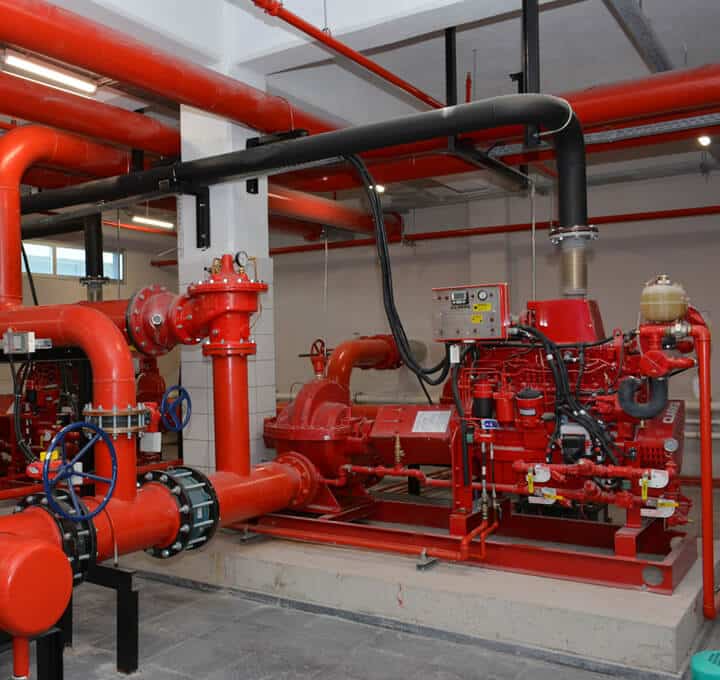
Firefighting Services
Firefighting services: Firefighting services are the process of extinguishing fires, preventing them from spreading, and protecting people and property from damage caused by fire. Firefighting strategies generally involve the use of specialized equipment and personnel trained in fire safety and firefighting techniques. Firefighting equipment may include fire hoses, fire extinguishers, smoke detectors, and fire sprinkler systems. Firefighting services may include firefighters, fire investigators, and fire safety experts. Firefighting services are designed to quickly identify and control the spread of fires and extinguish them as quickly and efficiently as possible.
GAS Based Fire Suppression Systems
A gas-based fire suppression system is an effective fire protection method used to control, contain, and extinguish fires. These systems are typically composed of a network of pipes and nozzles to deliver a fire-suppressing agent such as carbon dioxide, halon, or a mixture of both to a given area.
The gas-based system’s main advantage is that it is highly effective at extinguishing fires quickly, often in less than 60 seconds, without damaging the surrounding area. This is especially beneficial in areas with sensitive equipment or critical data that must remain protected. Additionally, the system is relatively easy to install and relatively inexpensive to maintain.
Gas-based fire suppression systems are particularly useful in areas with a high risk of fire and should be considered when creating a comprehensive fire safety plan. They are commonly used in telecommunications rooms, computer server rooms, flammable liquid storage areas, and other areas where a fire could spread quickly and cause significant damage.
For these systems to be effective, they must be properly maintained and inspected regularly. This includes regularly testing the system to ensure that all components are working properly, replacing any worn or damaged parts, and regularly checking the pressure of the system’s gas supply.
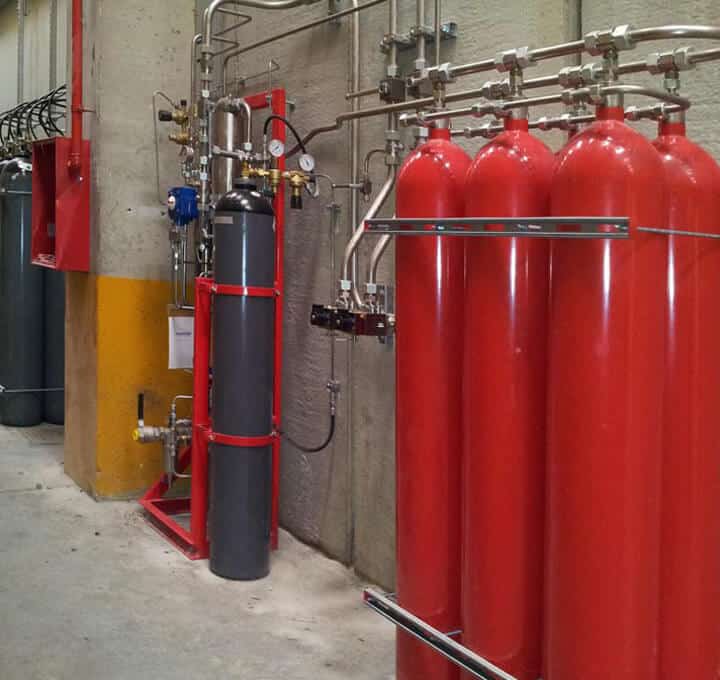
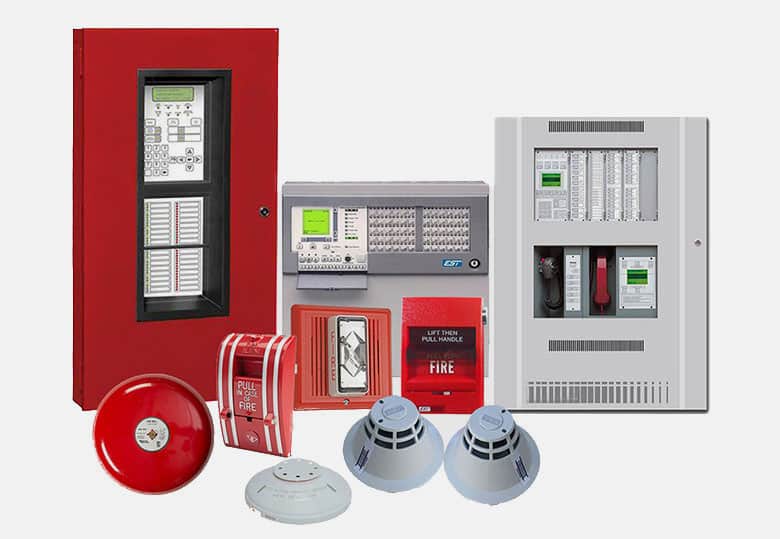
Fire Detection & Fire Alarm Systems
Fire detection and fire alarm systems are devices that detect the presence of fire and notify occupants of a building or area. Fire detection and alarm systems are used to protect people, property, and processes from fire and smoke. Most fire detection and alarm systems are designed to alert occupants of the building or area to the presence of fire, provide early warning of smoke and fire, and facilitate a quick and safe evacuation. Fire detection and alarm systems typically consist of smoke detectors, heat detectors, manual pull stations, audible and visible alarms, control panels, and other components. Smoke detectors detect the presence of smoke in the air and trigger an alarm, while heat detectors detect an increase in temperature and trigger an alarm. Manual pull stations are used to manually activate the alarm system, while audible and visible alarms provide an audible and visible indication of an alarm. Control panels are used to control and monitor the operation of the system.
Sprinkler Systems
Sprinkler Systems: A sprinkler system is a system of pipes and nozzles that are designed to detect and suppress fires. Fire sprinkler systems are designed to activate when a fire is detected and spray water onto the fire to suppress it. Sprinkler systems are often used in combination with other fire safety measures such as fire alarms, fire doors, and smoke detectors. Sprinkler systems are typically installed in commercial and industrial buildings. They can be used in residential buildings as well, but they are not as common due to the expense of installation and maintenance
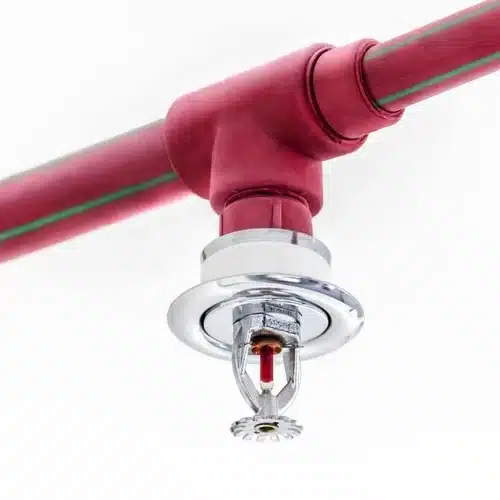
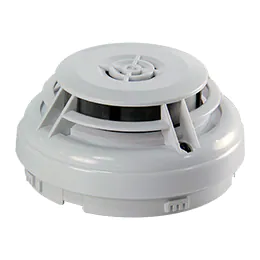
High Sensitivity Smoke Detection Systems
High-Sensitivity Smoke Detection (HSSD) systems are designed to detect smoke particles at extremely low levels, providing the earliest possible warning of fire. These systems are used in areas with special needs, such as data centers, high-end industrial areas, or hospitals. The system utilizes a combination of optical and ionization detectors to measure the presence of smoke particles. An optical detector uses a light source and photoelectric cell to measure the presence of smoke particles, while an ionization detector measures the presence of ionized particles in the air.
HSSD systems provide a more consistent and reliable detection than traditional smoke detection systems. They are also less prone to false alarms from other sources, such as dust or steam. In addition to providing early warning of a fire, HSSD systems can also be used to help pinpoint the source of the fire. This allows for faster response times and better fire management.
The benefits of using an HSSD system include enhanced fire safety, improved building protection, and improved response times. However, these systems can be expensive to install and require regular maintenance. They also require a high level of expertise to install correctly.
CCTV Surveillance Systems
Closed-circuit television (CCTV) surveillance systems are a type of security system that uses cameras to monitor activity in and around a given area. They are commonly used in public places, homes, and businesses to deter crime and help identify any potential criminal activity. CCTV systems can also be used as a deterrent to intruders, providing surveillance and recording evidence should a crime occur. In many cases, CCTV systems are used in conjunction with other security measures, such as alarms and access control systems.
A typical CCTV system will usually consist of one or more cameras, a monitor, a control unit, and a recording device. The cameras can be either wired or wireless, depending on the needs of the user. Each camera will have a certain field of view, which is determined by the lens and camera angle. The monitor is used to view the video feed from the camera. The control unit is responsible for controlling the system and can be used to operate the cameras, adjust their settings, and playback recorded video. The recording device can be anything from a VCR to a hard drive and is used to store the video feed from the cameras.
There are different types of CCTV systems available, such as IP cameras, PTZ cameras, and dome cameras.
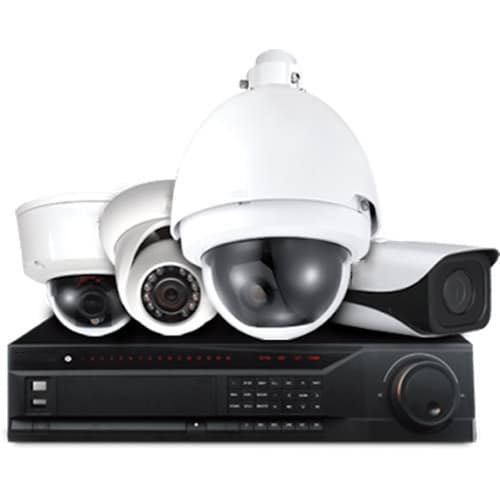

Access Control Systems
Access control systems are used to regulate which people or devices are granted access to physical or digital resources. The system can be as simple as a lock and key, or as complex as an electronic card reader or biometric scanner. Access control systems are used for both physical and digital security and can be used to control access to buildings, networks, and computer systems. They can also be used to regulate who has access to certain areas or to restrict the use of certain resources. Access control systems can be programmed to log and record who has access to certain resources, and can be used to track and monitor access to sensitive information. Access control systems can also be used to set up alarms and alert security personnel if unauthorized access is attempted.
Public Address Systems
Public address systems are audio systems used to amplify audio signals and broadcast them to a wide range of locations. They are commonly used to broadcast announcements, music, and other audio to large groups of people in a wide variety of settings. Public address systems can be used in schools, businesses, retail stores, churches, and many other places.
A public address system typically consists of a microphone, an amplifier, and several speakers. The microphone picks up the audio signal and passes it to the amplifier, which increases the signal and sends it to the speakers. The speakers then broadcast the sound to the desired area.
Public address systems can be either wired or wireless. Wired systems are usually more reliable, but wireless systems are easier to install and can be used in areas where running wires is difficult.
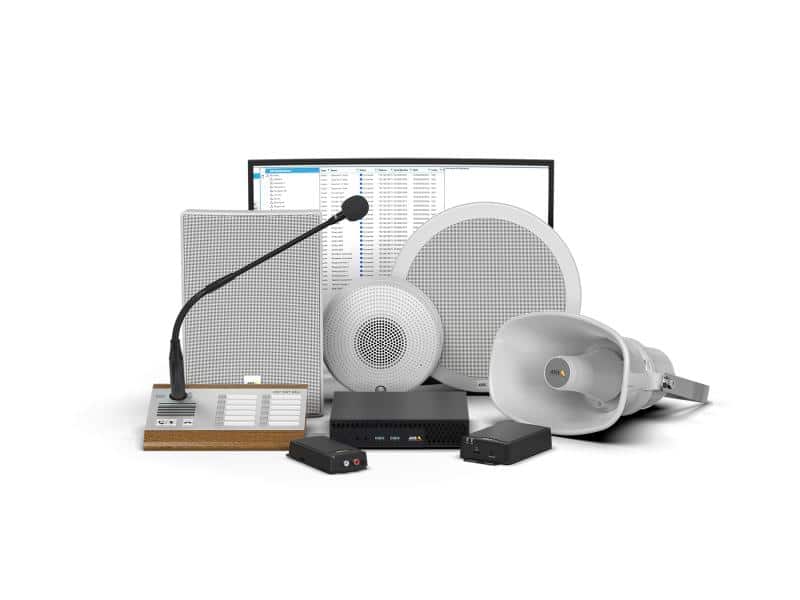
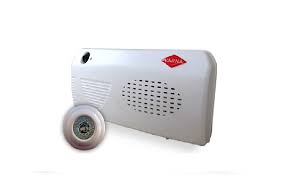
Rodent Repellent Systems
Rodent Repellent Systems (RRS) are devices designed to deter rodents from entering and inhabiting homes, buildings, and other areas. These systems use a combination of sound waves, electrical pulses, and other methods to send a signal that rodents find aversive, deterring them from entering the area. RRS systems are often used in commercial or residential buildings and can be used to keep rodents away from food sources, electrical wiring, and other areas where they are a nuisance. The most common type of RRS is ultrasonic, which emits sound waves in a frequency range that only rodents can hear, causing them to flee. Other RRS systems use chemical deterrents, infrared light, or a combination of multiple methods to keep rodents away. RRS systems are an effective way to reduce the rodent population in a given area, and can be used in conjunction with other pest control methods to provide comprehensive protection.
Water Leak Detection Systems
Water Leak Detection Systems are designed to detect the presence of water in a given area and alert the homeowner or business when there is a potential water leak. These systems are often used in areas prone to flooding, such as basements or crawlspaces, or any place where water could cause significant damage.
Water leak detection systems are typically composed of a combination of sensors, alarms, and control systems. Sensors are used to detect the presence of water in a given area, often using sophisticated acoustic or optical technologies. Alarms are then activated to alert the homeowner or business when a potential water leak is detected. Control systems are used to shut off the water supply when a leak is detected.
Water leak detection systems can be wired or wireless, and can be used in both residential and commercial applications. Many systems can also be integrated with home automation systems, allowing for remote monitoring and control.
Water leak detection systems are essential for protecting your home or business from water damage. They can help to identify problems before they become catastrophic and can save
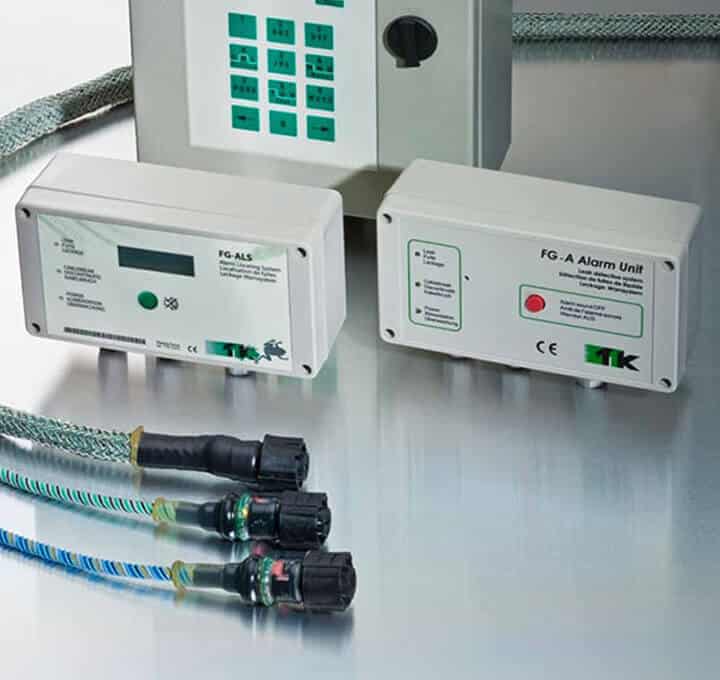

Integrated Building Management Systems
Integrated Building Management Systems (IBMS) are a comprehensive suite of systems and products that provide a comprehensive platform for the efficient operation, monitoring, and control of commercial and residential buildings. The system is designed to integrate all of the various components of a building into a single, unified system. This includes such elements as HVAC, security, lighting, fire protection, energy management, and building automation.
The primary purpose of an IBMS is to help optimize energy efficiency and provide a comfortable, safe, and secure environment for occupants. These systems are designed to monitor and control the various systems within a building to ensure that they are performing as designed and that energy is being used efficiently. The system can also provide an interface for building occupants to access and control the various systems.
IBMS can be used to help reduce energy costs and improve operational efficiency. By monitoring and controlling the various systems within a building, an IBMS can help to reduce energy demand and improve occupant comfort. In addition, IBMS can also be used to monitor and analyze data collected from the systems for further efficiency and optimization.
Flap / Boom Barriers
Flap/Boom Barriers are used in modern security systems to control and monitor traffic flow. They are used to restrict access to sensitive areas, such as airports and other public places. These barriers are usually automated, and they work by opening and closing a barrier arm to allow passage. The arm can be opened/closed manually or automatically, depending on the system. Flap/Boom Barriers provide a high level of security, as they can be programmed to detect unauthorized vehicles and alert security personnel. They are also used to regulate the flow of traffic in parking lots, and to ensure that only authorized personnel have access to certain areas.


Baggage Scanners
Baggage Scanners are used to detect weapons and other dangerous items that may be present in luggage. These scanners are usually used in airports to ensure the safety of travelers. They work by using advanced imaging technology to detect metal, explosives, and other items hidden in bags. Baggage Scanners are also used in some public places to detect weapons and other dangerous items that may be present in large bags. They are an important part of modern security systems, as they can help to keep public areas safe and secure.
Audio - Video Solutions
Audio-Video Solutions (AVS) is a multi-discipline professional services company that provides audio and visual solutions for businesses, education, government, and healthcare organizations. AVS specializes in designing, installing, and integrating audio-visual systems that enhance communication, collaboration, and engagement.
AVS offers a wide range of solutions including audiovisual equipment, system design and installation, sound masking, audio-video conferencing, digital signage, interactive whiteboards, control systems, and other audio-video solutions. They work with clients to create custom solutions to meet specific needs, from a single classroom projection system to a large-scale, multi-room audio-visual system.
AVS has the expertise and experience to provide robust, reliable audio-video solutions for any environment. Their team of experienced professionals offers expertise in system design, installation, and integration, as well as ongoing maintenance and support. With AVS, clients can be assured of a reliable, cost-effective audio-video solution that meets their needs and budget.
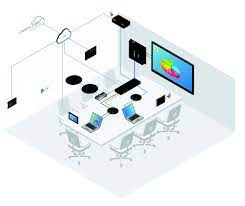
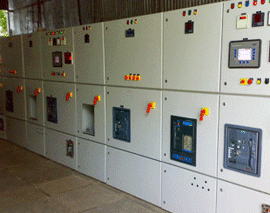
Electrical LT & HT Work
Electrical LT (low tension) and HT (high tension) works refer to the different voltage levels used in electrical systems and components. LT systems typically operate at a voltage of up to 600 volts, while HT systems operate at voltages between 600 and 230,000 volts. When it comes to electrical work, LT and HT refer to the different levels of voltage in the system, and the types of work required for each.
LT work involves the installation, maintenance, and repair of low-voltage electrical systems. This typically includes wiring, switches, fuses, outlets, circuit breakers, and other related components. In addition to the installation and maintenance of these systems, LT work also involves the testing and inspection of the system to ensure it is in compliance with electrical codes and regulations.
HT work, on the other hand, involves the installation, maintenance, and repair of higher-voltage electrical systems. This includes high-voltage lines, transformers, substations, and other related components. HT work also includes the testing and inspection of these systems to ensure they are in compliance with electrical codes and regulations. In addition, HT work involves the installation of safety equipment, such as lightning arresters, to protect people and equipment from high-voltage surges.
Room Integrity Test
A Room Integrity Test is a critical procedure used in various industries, including fire protection and suppression systems, to assess the structural integrity of a confined space or enclosure. This test is essential to ensure that the room can effectively contain and retain extinguishing agents, such as fire suppressants or gases, during an emergency situation. By evaluating the leakage or integrity of a room, this test helps ensure that the chosen fire suppression system will work efficiently, minimizing the risk of fire-related damage and ensuring the safety of occupants and valuable assets. we will delve deeper into the importance, process, and significance of Room Integrity Tests.

We offer comprehensive Annual Maintenance Contract (AMC) services for the aforementioned products.
